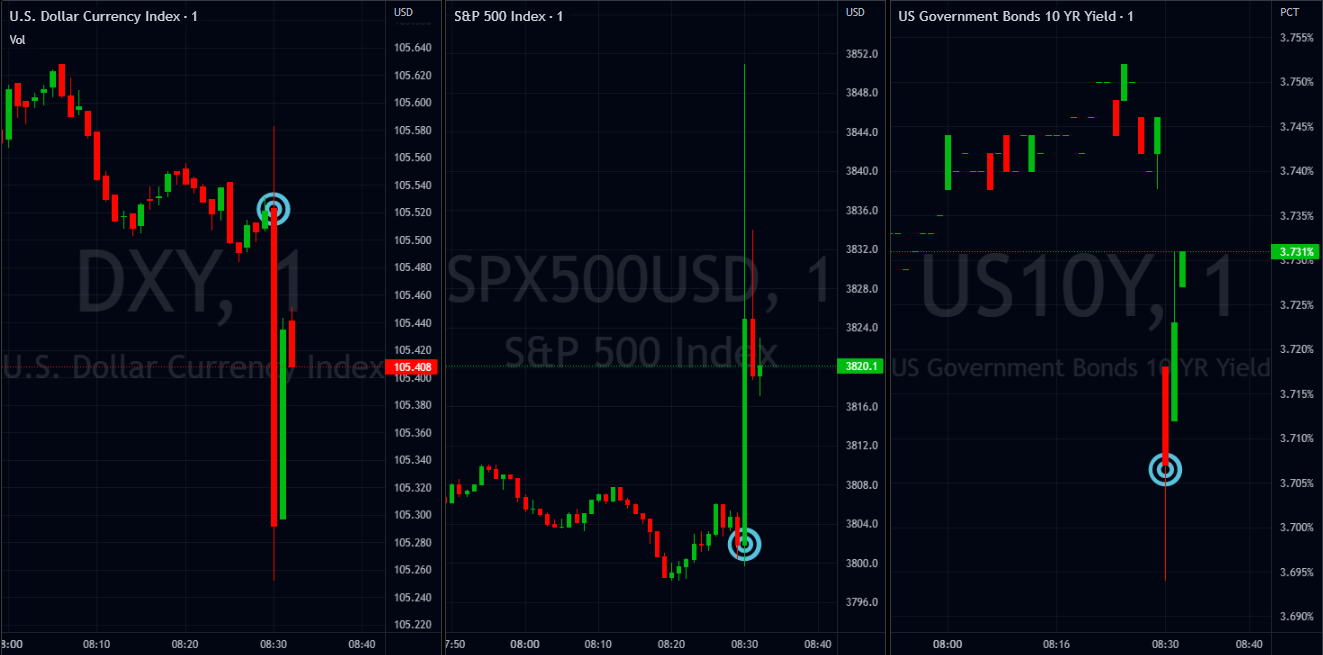On Friday, 3rd of February, at 8:30 AM ET, the BLS is set to release the US Nonfarm Payrolls and Unemployment Rate numbers for the month of January.
Here are some views on what to expect:
![DVIDS - Images - The Bureau of Labor Statistics [Image 5 of 8]](https://d1ldvf68ux039x.cloudfront.net/thumbs/photos/1705/3403911/2000w_q95.jpg)
The median forecast sees NFP coming in at 188K, with the highest estimate at 305K by Citigroup, and the lowest at 130K, with the majority of the estimates between the range of 170K-175K
The median estimate for the US Unemployment Rate is 3.6%, with the highest estimate at 3.7%, and the lowest estimate at 3.4%, with the majority of estimates between 3.5% - 3.6%.
BMO Capital Markets
The employment situation report on Friday will shed light on the labor market's strength as the new year begins. The early-January experience leads us to believe that the change in average hourly earnings will serve as a guidepost for future policy expectations. The current consensus is for an average hourly earnings gain of +0.3% in January, similar to the December gain that triggered the treasury rally.
Wells Fargo
Forecast for NFP: 190K
Forecast for US Unemployment Rate: 3.6%
The single most convincing rationale is that the labor market remained tight all last year. Along with production, income, and sales, all of which was iffy last year, employment is one of the main categories considered by the NBER, the group tasked with making the recession call. Employment was far too strong last year to be consistent with the recession. Will this year be different? Our forecast suggests that it will indeed. Job openings have rolled over, as have quits, and the share of consumers seeing jobs as plentiful. Layoff announcements are on the rise.
Citigroup
Forecast for NFP: 305K
Forecast for US Unemployment rate: 3.5%
It appears clear the Fed wants a rise in unemployment, a clear sign of recession. CIO believes the housing downturn and surge in consumer goods inventories could result in US job losses in 2023, including services positions that support the goods sector.
Wage gains are already decelerating and the total hours of work fell in the past two months.
US employment measures in January are particularly difficult to rely on because of seasonal adjustments typical at the start of every year. A "head fake" in the January employment data is likely to demonstrate strong reported job gains.
In Regional CIO Mike Whitaker's view, the January data – to be released Feb. 3, just after the Fed’s next policy meeting – will show a near 200,000 new positions, a level the Fed will consider unsustainably strong. False positives in the data could revive concerns the Fed will continue its "higher for longer" path. Investors presently relieved by the positive signs pointing to slower inflation ahead may find themselves challenged. The wild seasonal swing in employment won’t end in January. US employers typically hire more than a million workers in February, including numerous seasonal positions. With construction industries and business services under downward pressure, CIO believes the US employment recovery will end in the months to come.
ING
Forecast for NFP: 185K
Forecast for US Unemployment: 3.6%
Employment creation remains strong for now, but job lay-off announcements are coming in thick and fast. We are nervously watching what happens to the temporary help component, which has already experienced five consecutive monthly falls. Given the nature of the role, which is easier to be hired into and fired from, this tends to lead to broader shifts in employment. As such, we expect to see a softer non-farm payrolls increase than seen in recent months, but it is still likely to be well above 100k given the large number of job vacancies that remain.
JPMorgan
Forecast for NFP: 175K
Forecast for US Unemployment: 3.5%
Previous Release
On January 6th, 2022, the BLS released the US Nonfarm Payrolls data for December, which came in slightly hot at 223K, on estimates of 202K, however much lower than the prior read of 263K.
The Unemployment came out lower than expected at 3.5%, with a forecast of 3.7% and prior the same as the forecast.
US Average Earnings YoY also came in lower than expected at 4.6% on the forecast of 5% and prior of 5.1%
After seeing Nonfarm Payrolls coming in slightly higher than forecast however significantly lower than the prior of 263K and US Average Hourly Earnings coming 0.4% lower than forecast we saw upside movement in the S&P and downside movement in both Dollar and US 10-Year Yield.

